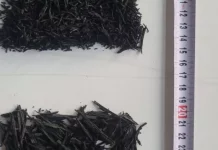Twitter is rethinking how the labels it applies to misinformation look and work, its head of site integrity told media in an interview, as the social media company tries to make these interventions more obvious and cut its reaction times.
Twitter’s Yoel Roth said the company is exploring changes to the small blue notices that it attaches to certain false or misleading tweets, to make these signals more ‘overt’ and be more ‘direct’ in giving users information. But he did not say whether any new versions would be ready before the US election in the next four weeks, a period that experts say could be rife with false and misleading online content.
Roth said the new efforts at Twitter include testing a more visible reddish-magenta color, and working out whether to flag users who consistently post false information.
“We’ve definitely heard the feedback that it would be useful to see if an account is a repeat offender or has been repeatedly labeled, and we’re thinking about the options there,” said Roth.
Twitter started labeling manipulated or fabricated media in early 2020, after a public feedback period. It expanded its labels to coronavirus misinformation and then to misleading tweets about elections and civic processes. Twitter says it has now labeled thousands of posts, though most attention has been on the labels applied to tweets by U.S. President Donald Trump.
In September, Twitter announced it would label or remove posts claiming election victory before results were certified.
Roth said research undermining the idea that corrections can strengthen people’s beliefs in misinformation – known as the ‘backfire effect’ – had contributed to Twitter rethinking how its labels could be more obvious. The risk is that label
“becomes a badge of honor” that users actively pursue for attention, said Roth.
Though Twitter’s labels have been praised by some misinformation experts as a long-overdue intervention, their execution has triggered criticisms from researchers as too slow.
“Mostly things take off so fast that if you wait 20 or 30 minutes… most of the spread for someone with a big audience has already happened,” said Kate Starbird, an associate professor at the University of Washington who has been analyzing Twitter’s labeling responses.
It took Twitter about eight hours to add labels to Trump tweets about mail-in voting the first time it labeled him in May, though Starbird said Twitter was getting quicker.
Two Trump tweets in September appeared to have been labeled within two hours.
Roth said Twitter reduces the reach of all tweets labeled for misinformation, by limiting their visibility and not recommending them in places like search results.
The company declined to share any data about the effectiveness of these steps.–Agencies






